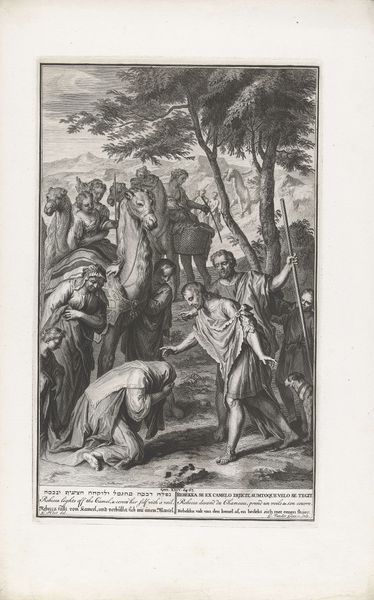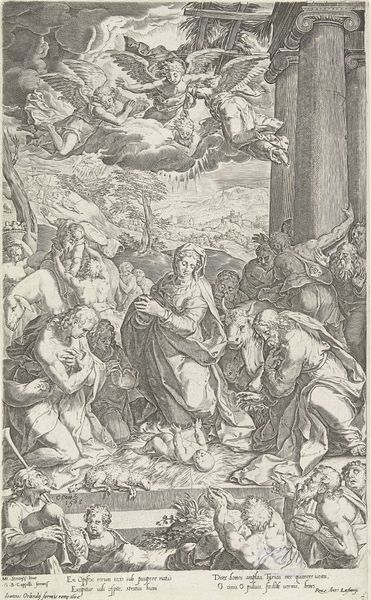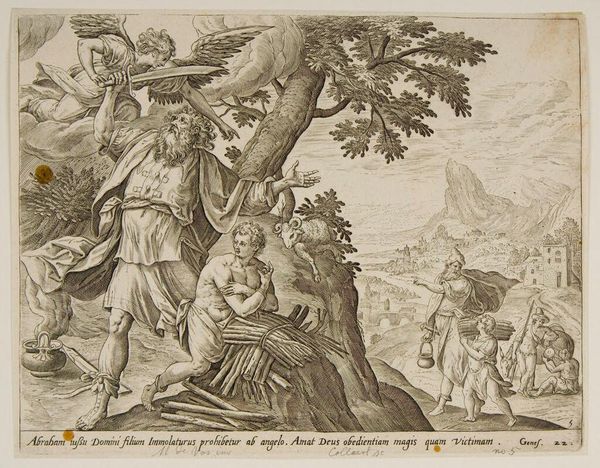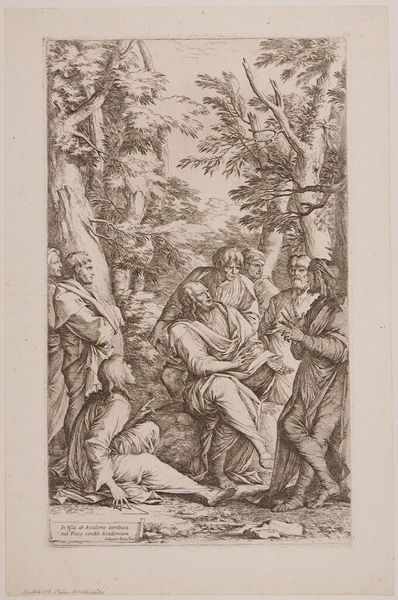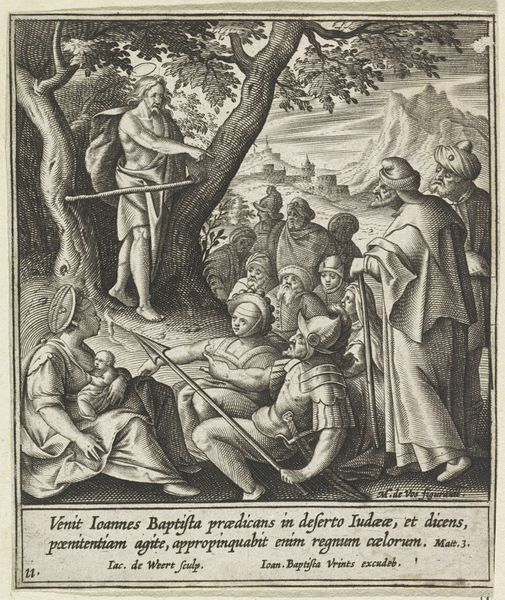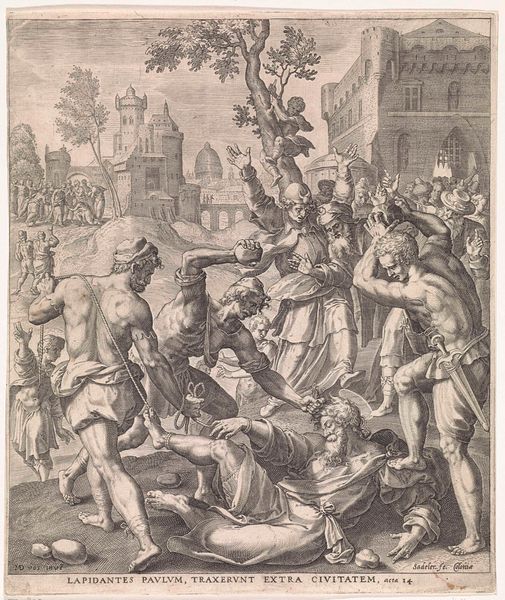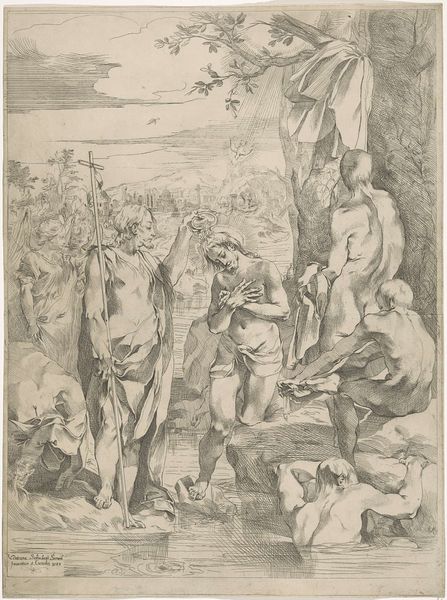
Herder Meliboeus beoordeelt het spel van de herders Corydon en Thyrsis 1654
0:00
0:00
wenceslaushollar
Rijksmuseum
drawing, print, etching, paper, engraving
#
drawing
#
narrative-art
#
baroque
#
pen drawing
# print
#
pen illustration
#
pen sketch
#
etching
#
landscape
#
figuration
#
paper
#
pen-ink sketch
#
genre-painting
#
engraving
Dimensions: height 258 mm, width 198 mm
Copyright: Rijks Museum: Open Domain
Curator: At first glance, it’s all very graceful—like something lifted straight out of a classical play. Editor: Precisely! We are looking at "Herder Meliboeus beoordeelt het spel van de herders Corydon en Thyrsis" – a print created by Wenceslaus Hollar in 1654. It currently resides in the collection of the Rijksmuseum. Look at how Hollar has etched this pastoral scene, brimming with figures in a seemingly simple style. Curator: Simple is not how I’d describe it. Observe the level of detail he achieves, the way the tree's roots are gnarled and gripping, the light reflecting on the goat's coats. This wasn't mass-produced; it shows the artistry and skill involved in making each individual print. You could feel the hand of the artist shaping each line. Editor: And the story that Hollar is telling! This imagery connects back to the era’s theatrical productions and their cultural impact. Remember, the social elite found pleasure in portraying idyllic scenes, reinforcing particular socio-political views concerning nature and harmony in the world. The very act of gathering to judge Corydon and Thyrsis…it is theater within theatre! Curator: That's all fascinating. Still, I can't help but think about the conditions Hollar worked under, probably commissioned by the very people shown here or similar. Consider the availability of paper, ink and tools – the labor that went into crafting it for the privileged. It shows us how intertwined art-making was, and continues to be, with issues of patronage and resources. Editor: The act of etching itself became a performance—a way for artists like Hollar to engage in cultural commentary and shape perceptions about leadership and societal roles. Furthermore, the act of distributing the image – how this singular piece affected the politics and sensibilities of its public! Curator: It's a testament to Hollar's mastery. Seeing such artistry tied so deeply with materials and making, is inspiring in its own way, don’t you think? Editor: Absolutely, viewing Hollar's work through the lens of both creation and distribution truly elevates our awareness of its broader cultural function.
Comments
No comments
Be the first to comment and join the conversation on the ultimate creative platform.

